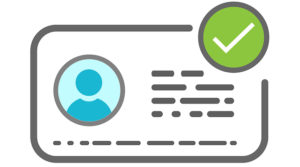Ches Rafferty – Inside Small Business
CEO of Scantek Solutions
How robust are your customer ID verification processes?
In Melbourne recently, a well-dressed woman used a doctored ID and stolen identity documents to buy a $42,000 car on finance and drive it away from a dealership – it is that easy for criminals with even basic skills, to trick a business and cost them dearly.
Identity fraud or identity crime is when someone uses another person’s personal information, without their consent, to obtain a benefit. In Australia, identity fraud is estimated to cost businesses between $1.4 billion and $2 billion each year. It takes a variety of forms including financial fraud where a criminal will use stolen documents like a passport, driver’s licence, Medicare Card, or other important identifying documents to obtain products, services, credit cards, loans or refunds.
For businesses of all types and sizes, ID fraud is a present and growing threat, especially in the online world and as scammers and criminals become more sophisticated.
However, unless a business falls under the jurisdiction of AUSTRAC’s Anti-Money Laundering and Counter-Terrorism Financing regime, there’s no law that says businesses must verify the identity of their customers. Some professions like conveyancers have verification of identity (VOI) requirements, which means they must take reasonable steps to verify customers to reduce the risk of identity fraud.
Some sectors are more at risk from ID fraud than others, with hire companies, real estate, telecommunications, financial services, and retailers all being attractive targets for criminals. But the reality is, whenever a license or another form of ID is used for verification in the course of doing business, you’re at risk.
The way businesses verify their customer’s identity can vary greatly. Some businesses still rely on using outdated manual ID verification procedures, and this might merely be checking a driver’s licences is valid and that the photo corresponds with the customer’s appearance. It’s still not unusual for a business to photocopy a licence or passport and keep that as proof of identity, which offers no proof whatsoever if the documents are fake.
Increasingly, criminals, including money launderers, use fake or stolen identities to cover their tracks, and in a recent AFP money laundering raid, fake passports, fake driver’s licences, and stolen IDs were seized showing how easy it is for criminals to get their hands on these documents.
So, what can a business do to ensure their identity verification processes are up to date, effective and suitable for their business, clientele and level of risk?
First, look at any previous examples of ID fraud within your business and review your level of risk. If you’ve been a victim of ID fraud before, how did it occur? Have you put in place safeguards to ensure it doesn’t happen again? Do you operate in a sector that is more often targeted by fraudsters?
Second, evaluate your customer’s due diligence and proof of identity practices. Do you have a process in place and are all your staff fully up to date and compliant with your policies and procedures? Often, it’s new staff members who are more likely to be tricked by criminals with fake IDs, so making sure staff are onboarded correctly and offered refreshers, can minimise mistakes.
Finally, consider how technology might strengthen your ID security practices. There are digital platforms and apps that can simplify the process and minimize human error using AI technology, which integrates with the Australian Government’s Document Verification Service (DVS). This process can take seconds, as opposed to time-consuming manual ID service providers.
